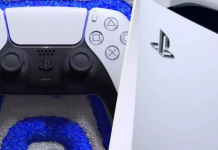The OnePlus 13 is a big device. The display clocks in at 6.82in, but despite the size it’s a relatively lightweight 210g, and thin at 8.5mm – that’s roughly comparable to the iPhone 16 Pro Max in terms of heft. You might not be able to slip it into a trouser pocket, but it’s light enough to use one-handed.
Encasing the lightly curved glass front is a flat metal mid-frame that’s comfortable in the hand, while around the back, you have the option of what OnePlus is calling a “microfibre vegan leather” finish with the blue colourway. Our white review unit doesn’t get this luxury treatment, but the matte glass rear still feels decidedly premium on the fingertips.
The OnePlus 13 has picked up IP68 and IP69 water and dust certification. The brand claims that the phone will survive in 1.5m of fresh water for half an hour, but it can handle 80-degree water jets from multiple directions – peace of mind if you’re prone to accidentally popping your phone in the dishwasher, I suppose.
Underneath the glass, the OnePlus 13 runs on the new Snapdragon 8 Elite chip, the kind of high-performance and power-efficient platform I’d hope to see in a 2025 flagship. The phone is zippy and responsive, helped along by the perennially superb OxygenOS operating system. The Android-based interface is built around performance and efficiency, using a mixture of tuning and clever UX design to make the OnePlus 13 feel blistering fast.
The latest version of OxygenOS gets some fun new features too, some of them brazenly swiped from competitors like the ‘dynamic island’ style widgets that encase the front-facing camera. The OnePlus 13 also uses one of the best features of Google’s ‘Find My Device’ network, letting you track your phone even when it’s switched off.
Camera

One of the biggest upgrades to this year’s OnePlus flagship comes to the phone’s already great camera system. Co-developed by Hasselblad for the fifth time, the OnePlus 13 features a roughly similar triple lens setup to that found on the OnePlus 12. There’s a 1/1.4in 50MP Sony LYT-808 as the main sensor, complemented by 50MP ultrawide and a 3x optical zoom telephoto camera.
While there’s not much difference on paper, the OnePlus 13 ushers in a suite of new image-processing tricks to get more out of the hardware. A new dual exposure algorithm improves sharpness in fast-moving subjects by seamlessly blending data from long and short exposures, while improvements to video allow for seamless zooming through focal lengths when shooting at 60fps and in 4K.
In practice, shots of moving subjects look noticeably sharper than last year’s phone. You might not think this matters to the average person, but the quality boost applies as much to thrilling shots of Formula 1 cars whizzing around as it does to everyday pics of your mate doing a silly dance in less-than-perfect lighting conditions.
Apple, Google and Samsung have each made strides in this area with similar technology, blending multiple exposures and sprinkling them with some clever post-processing magic to achieve sharp results. That OnePlus has cracked it with the OnePlus 13 places the phone’s camera among the best flagships I’ve tested.
Display
The OnePlus 13 is available in just one size, with a whopping great 6.8in display. That’s the same size as the Pixel 9 Pro XL and just a smidge smaller than the iPhone 16 Pro Max. A slate of enhancements to colour accuracy, calibration and pixel brightness gives the screen brilliant clarity and detail across all brightness levels. The OnePlus 13 also has a higher maximum resolution than Apple’s finest, the QuadHD+ display working out to an impressive 510 pixels per inch.
Fans of doom-scrolling in bed at 5am will appreciate how dim the display can drop down to while remaining legible – you can comfortably use the OnePlus 13 in the dark without blinding yourself – while the new peak brightness level of 4500 nits keeps the screen clear and readable in direct sunlight. That’s useful when using your phone as a satnav, for example. While even the sunniest UK weather doesn’t trouble modern phone displays, the improved peak brightness gives the OnePlus 13’s display an overall boost to quality and contrast under normal lighting conditions.
It’s an all-round excellent display, remaining clear and bright at narrow viewing angles, with punchy colours and a 120Hz refresh rate allowing for silky smooth app animations. The under-display ultrasonic fingerprint sensor is fast, and the improved ‘AquaTouch 2.0’ means the touchscreen can continue working when wet and while wearing gloves.

Battery
Packing a dazzlingly bright display with a top-shelf processor usually comes with the downside of reduced battery life, but OnePlus has pulled off something special with the OnePlus 13. Crammed into the 8.5mm thick phone is a new type of battery technology, a class-leading 6,000mAh silicon stack that delivers a truly multi-day battery life even with heavy use.
Despite cranking up the screen brightness, bumping the display up to the sharpest resolution, watching a YouTube series about cabbages, playing some games, and actively trying to run the battery down, I found the OnePlus 13 takes it all in its stride. When extensively testing for this review, I’d routinely end a day with 50 per cent charge left – use it lightly like a normal person and you can reasonably expect 80 per cent left in the bank at bedtime.
Charging times are fast too, with support for 100W wired charging and 50W wireless charging when paired with OnePlus’s optional magnetic charging stand. There’s also an optional magnetic case, which effectively makes the OnePlus 13 compatible with MagSafe accessories and chargers, albeit at a slower charging speed.


































